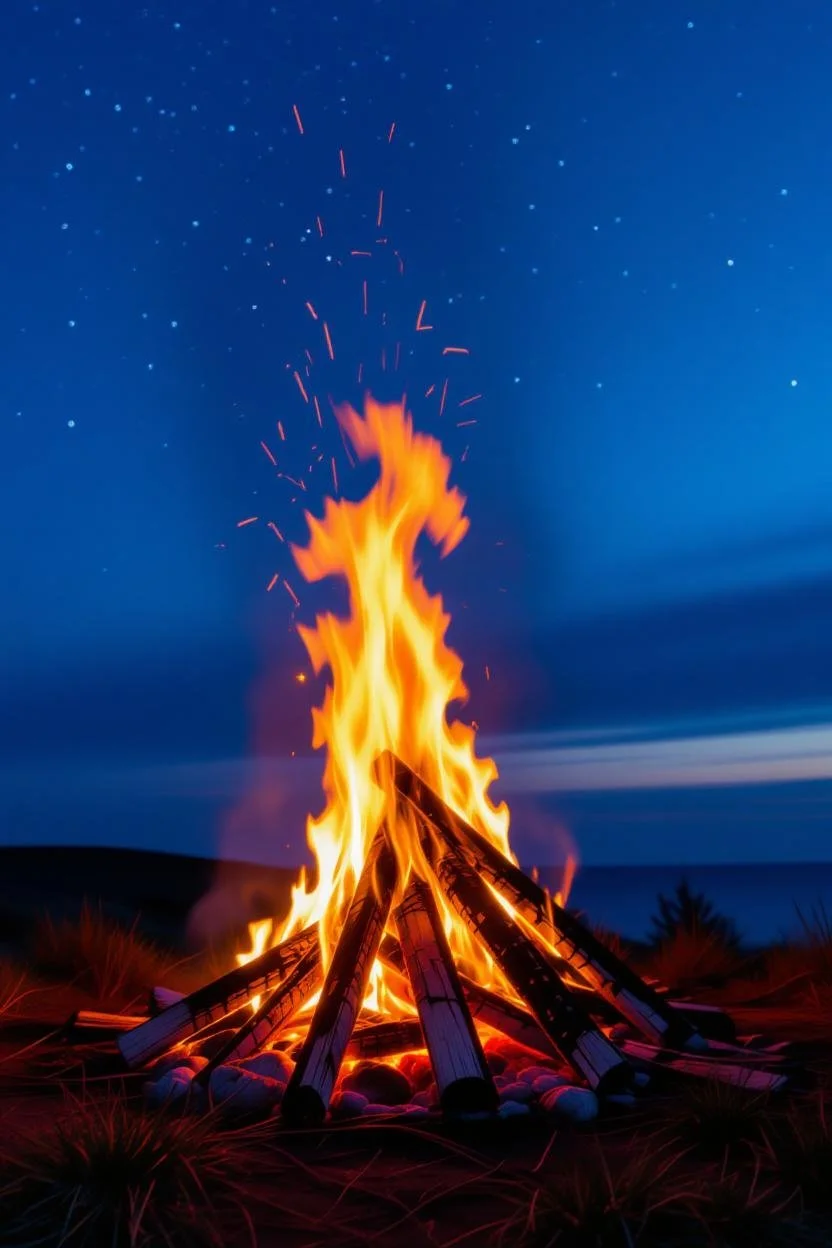Lanterns and Mischief: From Samhain Fires to Punkie Night
A Light in the Dark
A Samhain hilltop fire
In the ancient Celtic world, Samhain marked the moment when the year tipped into darkness. Bonfires blazed on hilltops, not as mere celebration but as protection—flames to cleanse, to guard livestock, and to guide wandering souls.
When Christianity spread, the bonfire’s symbolism endured. The Church kindled its own light—candles of vigil—burning in churchyards and windows on the eve of All Hallows’ Day, turning pagan flame into prayer.
Origins of the Lantern
Jack O’ Lanterns were made from turnips, beets, or mangelwurzels
The word lantern came from Old French lanterne, Latin lanterna, Greek lampein—“to shine.”
The term Jack-o’-Lantern began as slang for a night watchman, literally “Jack with the light.”
In folklore it soon attached to the mysterious flickers often seen over bogs—will-o’-the-wisps—and to a single tale that glows through centuries.
The Legend of Stingy Jack
An Irish tale tells of Stingy Jack, a trickster who invited the Devil for a drink, then trapped him by trickery. When Jack died, Heaven refused him and Hell was barred; the Devil threw him an ember from the Pit. Jack placed it inside a hollowed turnip to light his endless wandering—hence Jack of the Lantern.
When the story reached America, pumpkins—a New World fruit unknown in medieval Europe—replaced the hard British turnip.
But in the twelfth-century world of LADY OF LINCOLN, the true jack-o’-lantern would have been a turnip or mangelwurzel, its gnarled surface glowing eerily on a dark lane.
Punkie Night in Somerset
In Somerset villages such as Hinton St George, the custom survives as Punkie Night, celebrated on the last Thursday of October.
Children parade with carved root lanterns, singing:
“It’s Punkie Night tonight,
It’s Punkie Night tonight,
Give us a candle, give us a light,
If you don’t, you’ll get a fright.”
The word punkie (or punky) comes from Middle English punke—a fungus that burns like tinder. Some say the festival began when wives went searching with lanterns for husbands lost at a fair; others see in it the echo of Samhain’s wandering fires.
Medieval Christians would have recognised the light as both warning and witness—a small echo of the vigil lamps burning for the souls of the departed.
From Pagan Fire Rite to Christian Vigil
The pattern of Christian absorption of these pagan rituals is clear:
Pagan bonfires became church candles.
Soul-warding lanterns became All Hallows’ Eve processions.
Mischievous masks became Christian mummers performing morality plays.
What began as an attempt to placate unseen powers became a night to pray, remember, and hope—that the light of faith would conquer the year’s darkness.
Next in the series: “All Hallows’ Eve – The Vigil of the Departed” (Friday 31 October).

